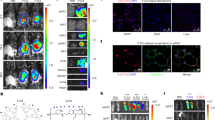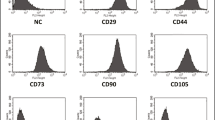Abstract
Obesity is primarily caused by the excessive accumulation of white adipose tissues (WAT). We previously obtained an adipocyte-specific aptamer termed Adipo8 in vitro. In this present study, this adipocyte-specific aptamer Adipo8 was first chemically modified by introduction of phosphorothioate linkages (PS-linkages) and then conjugated to polyethylene glycol (PEG), we tested whether this modified aptamer could distinguish mature white adipocytes from 3T3-L1 preadipocytes or brown adipocytes. To verify the binding affinity of this aptamer to mature white adipocytes in vivo as well as in vitro, we tested whether modified Adipo8 could specifically bind to the WAT of Diet-Induced Obesity (DIO) C57BL/6 mice. Finally, we examined the effect of Adipo8 on the adipogenic differentiation of mature white adipocytes. Based on our results, PS-modified aptamer demonstrated its high binding affinity and specificity, and was able to distinguish white adipocytes from 3T3-L1 preadipocytes or brown adipocytes in vitro. PS-modified Adipo8 also demonstrated more biostability and prolonged binding time in biological fluids. Additionally, Adipo8 could inhibit adipogenic differentiation of adipose tissue, possibly by inhibiting the expression of PPAR-γ in adipose tissue. This modified aptamer holds great promise as a stable molecular recognition tool for targeted delivery to adipocytes and has potential in the treatment of obesity.
Similar content being viewed by others
References
Haslam DW, James WP. Obesity. Lancet, 2005, 366: 1197–1209
Arem H, Irwin M. A review of web-based weight loss interventions in adults. Obes Revy, 2011, 12: e236–243
Peirce V, Carobbio S, Vidal-Puig A. The different shades of fat. Nature, 2014, 510: 76–83
Tan W, Donovan MJ, Jiang J. Aptamers from cell-based selection for bioanalytical applications. Chem Rev, 2013, 113: 2842–2862
Hu R, Zhang X, Zhao Z, Zhu G, Chen T, Fu T, Tan W. DNA nanoflowers for multiplexed cellular imaging and traceable targeted drug delivery. Angew Chem Int Ed, 2014, 53: 5821–5826
Pu Y, Zhu Z, Han D, Liu H, Liu J, Liao J, Zhang K, Tan W. Insulin-binding aptamer-conjugated graphene oxide for insulin detection. Analyst, 2011, 136: 4138–4140
Sefah K, Shangguan D, Xiong X, O’Donoqhue MB, Tan W. Development of DNA aptamers using cell-selex. Nat Protoc, 2010, 5: 1169–1185
Zhu G, Ye M, Donovan MJ, Song E, Zhao Z, Tan W. Nucleic acid aptamers: an emerging frontier in cancer therapy. Chem Commun, 2012, 48: 10472–10480
Keefe AD, Pai S, Ellington A. Aptamers as therapeutics. Nat Rev Drug Discov, 2010, 9: 537–550
Zhang Y, Chen Y, Han D, Ocsoy I, Tan W. Aptamers selected by cell-selex for application in cancer studies. Bioanalysis, 2010, 2: 907–918
Liu J, You M, Pu Y, Liu H, Ye M, Tan W. Recent developments in protein and cell-targeted aptamer selection and applications. Curr Med Chem, 2011, 18: 4117–4125
Wang R, Zhu G, Mei L, Xie Y, Ma H, Ye M, Qing FL, Tan W. Automated modular synthesis of aptamer-drug conjugates for targeted drug delivery. J Am Chem Soc, 2014, 136: 2731–2734
Zhu G, Zhang S, Song E, Zheng J, Hu R, Fang X, Tan W. Building fluorescent DNA nanodevices on target living cell surfaces. Angew Chem Int Ed, 2013, 52: 5490–5496
Liu J, Liu H, Sefah K, Liu B, Pu Y, Van Simaeys D, Tan W. Selection of aptamers specific for adipose tissue. PloS One, 2012, 7: e37789
Wang RE, Wu H, Niu Y, Cai J. Improving the stability of aptamers by chemical modification. Curr Med Chem, 2011, 18: 4126–4138
Kaur H, Li JJ, Bay BH, Yung LY. Investigating the antiproliferative activity of high affinity DNA aptamer on cancer cells. PloS One, 2013, 8: e50964
Kim Y, Phillips JA, Liu H, Kang H, Tan W. Using photons to manipulate enzyme inhibition by an azobenzene-modified nucleic acid probe. Proc Natl Acad Sci U S A, 2009, 106: 6489–6494
Koizumi M. True antisense oligonucleotides with modified nucleotides restricted in the n-conformation. Curr Top Med Chem, 2007, 7: 661–665
Lin Y, Nieuwlandt D, Magallanez A, Feistner B, Jayasena SD. High-affinity and specific recognition of human thyroid stimulating hormone (hTSH) by in vitro-selected 2′-amino-modified RNA. Nucleic Acids Res, 1996, 24: 3407–3414
Yuan Q, Wu Y, Wang J, Liu D, Zhao Z, Liu T, Zhang X, Tan W. Targeted bioimaging and photodynamic therapy nanoplatform using an aptamer-guided g-quadruplex DNA carrier and near-infrared light. Angew Chem Int Ed, 2013, 52: 13965–13969
Zhu G, Zheng J, Song E, Donovan M, Zhang K, Liu C, Tan W. Self-assembled, aptamer-tethered DNA nanotrains for targeted transport of molecular drugs in cancer theranostics. Proc Natl Acad Sci USA, 2013, 110: 7998–8003
Sciacca L, Vigneri R, Tumminia A, Frasca F, Squatrito S, Frittitta L, Vigneri P. Clinical and molecular mechanisms favoring cancer initiation and progression in diabetic patients. Nutr Metab Cardiovas, 2013, 23: 808–815
Burmeister PE, Lewis SD, Silva RF, Preiss JR, Horwitz LR, Shannon Pendergrast P, McCauley TG, Kurz JC, Epstein DM, Wilson C, Keefe AD. Direct in vitro selection of a 2′-O-methyl aptamer to VEGF. Chem Biol, 2005, 12: 25–33
Suganami T, Tanaka M, Ogawa Y. Adipose tissue inflammation and ectopic lipid accumulation. Endocr J, 2012, 59: 849–857
Gil A, Olza J, Gil-Campos M, Gomez-Liorente C, Aguilera CM. Is adipose tissue metabolically different at different sites? Inte J Pediatr Obes, 2011, 6(Suppl 1): 13–20
Lowell BB, Flier JS. Brown adipose tissue, beta 3-adrenergic receptors, and obesity. Annu Rev Med, 1997, 48: 307–316
Zhao Z, Meng H, Wang N, Donovan MJ, Fu T, You M, Chen Z, Zhang X, Tan W. A controlled-release nanocarrier with extracellular pH value driven tumor targeting and translocation for drug delivery. Angew Chem Int Ed, 2013, 52: 7487–7491
Vater A, Sell S, Kaczmarek P, Maasch C, Buchner K, Pruszynska-Oszmalek E, Kolodziejski P, Purschke W, Nowak KW, Strowski MZ, Klussmann S. A mixed mirror-image DNA/RNA aptamer inhibits glucagon and acutely improves glucose tolerance in models of type 1 and type 2 diabetes. J Biol Chem, 2013, 288: 21136–21147
Lopez-Colon D, Jimenez E, You M, Gulbakan B, Tan W. Aptamers: turning the spotlight on cells. Wiley Interdiscip Rev Nanomed Nanobiotechnol, 2011, 3: 328–340
Qiu L, Wu C, You M, Han D, Chen T, Zhu G, Jiang J, Yu R, Tan W. A targeted, self-delivered, and photocontrolled molecular beacon for mrna detection in living cells. J Am Chem Soc, 2013, 135: 12952–12955
Sun H, Zhu X, Lu PY, Rosato RR, Tan W, Zu Y. Oligonucleotide aptamers: new tools for targeted cancer therapy. Mol Ther Nucleic Acids, 2014, 3: e182
Zhao Z, Fan H, Zhou G, Bai H, Liang H, Wang R, Zhang X, Tan W. Activatable fluorescence/MRI bimodal platform for tumor cell imaging via MnO2 nanosheet-aptamer nanoprobe. J Am Chem Soc, 2014, 136: 11220–11223
Fang X, Tan W. Aptamers generated from cell-selex for molecular medicine: a chemical biology approach. Accounts Chem Res, 2010, 43: 48–57
Ali AT, Hochfeld WE, Myburgh R, Pepper MS. Adipocyte and adipogenesis. Eur J Cell Biol, 2013, 92: 229–236
Zhou L, Zhang X, Wang Q, Lv Y, Mao G, Luo A, Wu Y, Wu Y, Zhang J, Tan W. Molecular engineering of a tbet-based two-photon fluorescent probe for ratiometric imaging of living cells and tissues. J Am Chem Soc, 2014, 136: 9838–9841
Author information
Authors and Affiliations
Corresponding author
Rights and permissions
About this article
Cite this article
Chen, K., Liu, J., Tong, G. et al. Adipo8, a high-affinity DNA aptamer, can differentiate among adipocytes and inhibit intracellular lipid accumulation in vitro . Sci. China Chem. 58, 1612–1620 (2015). https://doi.org/10.1007/s11426-015-5367-0
Received:
Accepted:
Published:
Issue Date:
DOI: https://doi.org/10.1007/s11426-015-5367-0




